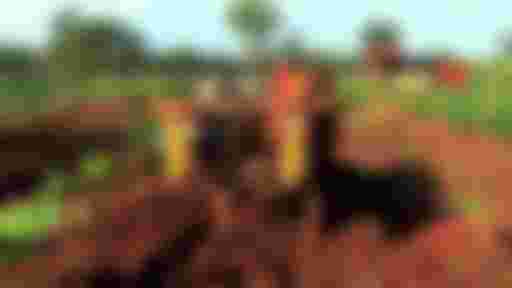In the broadest sense, humans are the root cause of the destruction of watersheds neither direct nor indirect obliteration. Human activities are undeniable facts. The following listed below are the activities that can negatively affect our watershed:
Climate change;
Agriculture practices;
Sedimentation
Nutrients
Animal feeding operations
Livestock grazing
Irrigation
pesticide
Urban runoff;
Industrial pollution;
Residential runoff; and
Deforestation
Below, is an elaborative discussion about the abovementioned activities.
Climate Change. The logic equation here is: more people = higher temperature. The explanation for this is, if there are lots of people living in an area, most probably in an urban area, there is a highly chance of burning things that might really affects the environment, if that so, burning can cause increased global temperature which leads to less surface water.

Agricultural practices. Agricultural practices can affect watersheds through several different means. Such as: sedimentation; nutrients; animal feeding operations; livestock grazing; irrigation; and pesticides.
-
a. Sedimentation - The most prevalent source of agricultural water pollution is soil that is washed off fields. Rain water carries soil particles (sediment) and dumps them into nearby lakes or streams. Too much sediment can cloud the water, reducing the amount of sunlight that reaches aquatic plants. It can also clog the gills of fish or smother fish larvae (United States Environmental Protection Agency, 2015).
-
b. Nutrients – Farmers apply nutrients such as phosphorus, nitrogen, and potassium in the form of chemical fertilizers, manure, and sludge. When these sources exceed plant needs, or are applied just before it rains, nutrients can wash into aquatic ecosystems. There they can cause algae blooms, which can ruin swimming and boating opportunities, create foul taste and odor in drinking water, and kill fish by removing oxygen from the water (United States Environmental Protection Agency, 2015).
-
c. Animal feeding operation – In the Philippines, estimates shows that there are more than 13 million tons of excreted manure can be generated annually from the livestock and poultry industry (Calub, 2016). Runoff from poorly managed facilities can carry pathogens such as bacteria and viruses, nutrients, and oxygen-demanding organics and solids that contaminate shell fishing areas and cause other water quality problems. Ground water can also be contaminated by waste seepage (United States Environmental Protection Agency, 2015).
-
d. Livestock grazing - Overgrazing exposes soils, increases erosion, encourages invasion by undesirable plants, destroys fish habitat, and may destroy streambanks and floodplain vegetation necessary for habitat and water quality filtration (United States Environmental Protection Agency, 2015).
-
e. Irrigation - Irrigation water is applied to supplement natural precipitation or to protect crops against freezing or wilting. Inefficient irrigation can cause water quality problems. Excessive irrigation can affect water quality by causing erosion, transporting nutrients, pesticides, and heavy metals, or decreasing the amount of water that flows naturally in streams and rivers (United States Environmental Protection Agency, 2015).
-
f. Pesticides - Insecticides, herbicides, and fungicides are used to kill agricultural pests. These chemicals can enter and contaminate water through direct application, runoff, and atmospheric deposition (United States Environmental Protection Agency, 2015).
All of these can be toned down through proper applications of agricultural methods.

Urban runoff. Cities and towns contribute to nonpoint source pollutants. Excessive nonpermeable surfaces such as roads allows runoff to sweep chemicals easily into lakes and streams collection of more waste in landfills, that can leak and increase in the extraction of groundwater. Most street drains flow through pipes directly into streams or lakes.
Common pollutants found in urban runoff:
· sediments from bare soils
· bacteria from wastes
· nutrients from fertilizers
· oil from parking lots
· gasoline
· metals
· antifreeze and grease
· pesticides
· trash
Industrial pollution. Industrial facilities are considered point sources of pollution. They can contribute numerous types of toxic substances, chemicals and products (depending on the type of industry). Oil and gas facilities can be sources of pollution if they leak these products into the groundwater.
Effects of industrial pollution includes:
· color changes
· excessive algae
· odors
· absences of aquatic life
· fish kills
· sewage fungus
Residential runoffs. This runoff is not treated and goes through sewers directly into streams, rivers, and lake. More pavement means less water will soak into the ground, meaning that the underground water table will have less water to recharge it. This will lower the water table. Some existing wells will not be deep enough to get water and might run dry. The runoff from the increased pavement goes into storm sewers, which then goes into streams. This runoff, which used to soak into the ground, now goes into streams, causing flooding. Changing a stream channel can cause flooding and erosion along the stream banks (Coles, 2012).

Deforestation. Leads to increased erosion, which could lead to an increase of waste materials that end up contaminating the freshwater supply


